Maps and Legends: A Road Trip with R.E.M.
On a recent road trip between Sewanee, Tennessee, and Charlottesville, Virginia, I decided to take R.E.M. along for the ride. To be more precise, I decided to revisit their years with the independent music label I.R.S. (1982–1987). Although I did not encounter R.E.M.’s murky and magical world until I was fifteen, with Fables of the Reconstruction (1985)—or Reconstruction of the Fables (they remain coy about the actual title)—I then eagerly worked my way more or less backward through Reckoning (1984), Murmur (1983), and Chronic Town (1982), and stayed with them through Lifes Rich Pageant (1986), Dead Letter Office (1987), and Document (also 1987). These albums deeply shaped my developing aesthetic and moral imagination. R.E.M. then parted company with I.R.S., and I parted company with R.E.M.
1982–1987: for adolescent lovers of alternative music, “Bliss it was in that dawn to be alive”! These were the early years of U2, the only years of the Smiths, the best years of Simple Minds, and so forth and so on. A devout Anglophile inexplicably living in rural northeastern North Carolina, R.E.M. nevertheless instantly gained a special place in my pantheon. Although they always came just barely second in my loyalty to U2, they were not only one of the very few American bands to whom I deigned to listen, they were also distinctively Southern. That is, unlike the soulless, placeless, meaningless, prefabricated music endlessly streaming from the radio, the music of R.E.M. was defiantly regional: it evoked a definite sense of place, and with that place a community, a history, and a culture. Thus, instead of imaginary or alien locations like New York City or Los Angeles, R.E.M.’s first three albums were recorded in my very own state, in Winston-Salem. And although they were based in Athens, Georgia, that was still just close enough to make them count as a “local band.”
R.E.M.’s South, however, was not the populist South of Southern rock, but rather the more patrician South of Southern Gothic. As the striking front and back cover images of Murmur made so evocatively clear, both musically and visually R.E.M. conjured up a dreamy, swampy, melancholy, Spanish moss-and-kudzu-covered South with ruined buildings, rural landscapes, and eccentric characters. A Romantic post-bellum South with a buried past, secret stories, and poignant memories; a semi-lost civilization, the only guide to which were faded “Maps and Legends” (Fables). The famous train-trestle photograph on the back cover of Murmur, taken by Sandra-Lee Phipps, eventually inspired pilgrimages and preservation efforts. It “captured Athens’ unique culture as a strange mix of decaying South, hip art, small town and cosmopolitan sensibility, says Rodger L. Brown, author of Party Out of Bounds, a history of the Athens music scene. ‘Abandoned relics, decrepitude,’ he says. ‘It captured that kind of whole aesthetic.’ ”[i]
It also captured me. There was a cypress swamp near my house, and in my eagerness to produce a grainy Murmur-like photograph I convinced my best friend Jeremy to pull over to the side of the road so I could take a picture. When his car got stuck in the mud he was not amused, but I got the photo. That one and numerous other black-and-white images of fields and silos and abandoned farmhouses fill the photo albums of my youth. While not all were intended as a direct homage to R.E.M. cover art (like the swamp picture), they were nevertheless partly inspired by my encounter with the band’s music and vision, as well as the Faulkner, Welty, and O’Connor stories I was reading in high school: it was all of a piece, the symbolic cartography of Southern mythology.
Just prior to this drive between Sewanee and Charlottesville, I realized that while I still had most of these albums on LPs, I had not listened to them in years, no longer having a record player to go with the records. In other words, I had never replaced my R.E.M. collection on CD (and yes, I still listen to CDs, no downloaded or streamed music for me, thanks). The only R.E.M. CDs that I had were some good British or indie compilations of their earlier and later periods. But as all children of the lost AOR-era know—an era as gone with the wind as any plantation—that leaves out the bulk of the material, and often the best and most interesting songs. Strictly speaking, “best of” compilations, not being real albums, don’t count. So I went to amazon.com and ordered the lot: Murmur, to my astonishment, was not available (at least at that moment) new, so I got a used disc, and the initial EP Chronic Town was only available as the last five tracks of Dead Letter Office.
Thus loaded up, I set out on the eight-hour, 527-mile drive through a small corner of R.E.M.’s South: 41-A from Sewanee to Monteagle, I-24 to Chattanooga, I-75 to Knoxville, I-81 to Staunton, and I-64 to Charlottesville. It was a glorious late May morning, and the weather remained perfect throughout the journey: bright sun, blue sky, cool temperature, little traffic, and rolling green hills from Tennessee to Virginia. Chronic Town’s new location at the end of Dead Letter Office required some juggling to begin with, but afterward it was a simple matter of going through the remaining six albums chronologically, with an unexpected bonus being the live CD included with the version of Document that I purchased, a 1987 concert in Holland with the band in top form, including songs from all of the previous albums: a great summary of the period—better than a “best of”—and enlightening to me as I never saw them live. I finished listening about an hour from Charlottesville and completed the journey in silence, watching the scenery without a soundtrack and processing what I had heard.
Michael Stipe’s famously obscure singing and lyrics were not much—if any—clearer this time around, although I realized to my surprise that you could discern almost every word of “Feeling Gravitys Pull” (Fables), not that it helped very much. In the aggregate, what stood out—in an unfocused, surreal, stream-of-consciousness way—were the number of references to books and reading: Stipe’s approach to the world was highly textualized. It’s been observed that most of these early R.E.M. songs were Rorschach tests on which listeners projected their own meanings. Stipe craftily made the verses a blur of words just under the edge of coherence or comprehension, and then triumphantly emerged with an intelligible chorus to which listeners could equally triumphantly sing along, as if we knew what the hell the song was about (cf. “Radio Free Europe,” which was almost certainly not about Radio Free Europe).
And despite the general murkiness Stipe’s voice was charged with urgent passion or profound pathos, so the songs seemed to be about something, even if the only clue to their content was the singer’s emotional register. They were also, often, achingly beautiful, with Peter Buck’s strumming acoustic or ringing 12-string guitars, occasional touches of piano and banjo, Mike Mills’s melodic bass, and Bill Berry’s nimble drums, along with clever and complex backing vocals provided by Mills and Berry that neatly counterpointed Stipe’s resonant idiosyncratic delivery. And they could, on occasion, rock out.
R.E.M. was the quintessential 1980s American “college band.” In addition to its Southern regionalism, their early music was also defiantly arty and intellectual (“it’s a Man Ray kind of sky” Stipe intones in “Feeling Gravitys Pull”)—although, when pop culture aspires to these ambitions, unkind critics are often quick to replace them with “pretentious” and “incoherent.” Such accusations, valid or not, faded in ’86 and ’87 when Stipe’s enunciation and the band’s leftist politics both clarified. Songs such as “Fall on Me” and “Cuyahoga” (from Lifes Rich Pageant) expressed ecological concern, and “Begin the Begin” (Pageant) and “Finest Worksong” (Document) called for political rejuvenation. But R.E.M. initially appealed to the literate, or at least those who aspired to literacy—poets, artists, English majors, and other such dubious types. From interviews with Stipe read as a teenager, I first encountered the words “palimpsest” and “lachrymose,” and in a review of an R.E.M. album in Rolling Stone or Spin I first encountered the word “anomie”: not your typical rock music vocabulary.
Prior to R.E.M., Southern rock meant “Southern rock”: the Allman Brothers Band, Lynyrd Skynyrd, Molly Hatchet, and so forth. R.E.M. appealed to, and thus partly created, a very different audience, but their success also revealed the serious fault lines in white Southern youth culture. Early R.E.M.’s huge popularity in some circles and utter absence in others raises definite issues of class and social location, as well as race. Who listened to R.E.M. back then and who didn’t? To put it as bluntly and contentiously as possible, for all kinds of reasons the early R.E.M. was—intentionally or not—what you might call an anti-redneck band. (Is this any different from “college band”? Discuss.) In the tribal badges of white Southern youth culture circa 1982–87 (whether in high school or college), listening to R.E.M., wearing R.E.M. T-shirts or buttons, putting R.E.M. stickers on your car, and writing “R.E.M.” on your math notebook was a way of defining your identity. And that was probably preppy and middle class, but not necessarily conservative or conventional. An R.E.M. fan of this era was someone who aspired to the same arty intellectualism and political consciousness as the music they listened to, even if they didn’t exactly know what this meant (including the music); someone who liked the ’60s more than the ’70s; someone who, for better or worse, would rather sing “Radio Free Europe” than “Sweet Home Alabama.”
Then came Document, their final record with I.R.S. This was R.E.M.’s first breakthrough to a larger mainstream audience, with the two big hits “The One I Love” and “It’s the End of the World as We Know It (And I Feel Fine).” In retrospect I can recognize Document as a considerable achievement, but I didn’t like it in 1987, at age seventeen. It was too different for me then, with Stipe’s gentle murmur replaced by harsh yelps and the band’s playing more frenetic and angular. They introduced a Fairlight synthesizer on this album, which I thought was a betrayal of their retro, low-tech, folk-rock roots; and I disapproved of their announced departure from the independent I.R.S. for a bigger label. So, although I was glad to see the band prosper in the years to come, and liked well enough their classic later songs such as “Losing My Religion,” “Stand,” “Shiny Happy People,” “Everybody Hurts,” “Nightswimming,” and “Man on the Moon,” I heard them only in passing, on the radio or someone else’s stereo. Nothing personal. Document was my last R.E.M. album and I stopped “following” their music. Drummer Bill Berry retired in 1997 after surviving an on-stage brain aneurysm, and the band decided to call it a day in 2011.
The early R.E.M. never published Stipe’s lyrics, so the whimsical video of “Can’t Get There From Here”—the first single from Fables of the Reconstruction—was notable for putting some (but not all) of the words on the screen. An intentional visual/verbal palimpsest, and at long last (at least partial) proof of what Stipe was actually saying! The existential chorus about a hard-to-find, off-the-beaten path but still worthwhile destination (“I’ve been there, can’t get there from here, I’ve been there I know the way”) is given specificity in the verses by the double yet cryptic mention of Philomath, Georgia (“If you’re needing inspiration, Philomath is where I go,” “Philomath they know the low-down”). But even folks in Atlanta are likely to need a map to find Philomath, an unincorporated community over 100 miles away in bucolic northeast Georgia. Despite its significant academic and military history, Philomath (which means “love of learning” in Greek) was almost totally forgotten after the Civil War and erased from the collective consciousness until Stipe’s playful invocation of its “legend” put it back on the cultural “map.” It now again has a place in the symbolic cartography of Southern mythology.[ii] As with the rest of R.E.M.’s South, even if you can’t get there from where you are, at least you know the way.
[i] See Cameron McWhirter, “For R.E.M. Fans, Tunes May Linger but Trestle Faces Day of Reckoning,” in (of all places) The Wall Street Journal, February 6, 2012, available at http://www.wsj.com/articles/SB10001424052970204624204577180660673324908.
[ii] For the official tourism basics, see http://www.exploregeorgia.org/city/philomath, and for several architectural photographs by Brian Brown, see https://vanishingnorthgeorgia.com/tag/philomath-ga/.
Appendix
A very subjective list of standout tracks from those seven or so hours on the road, bearing in mind that I had listened to these records dozens and dozens of times twenty years ago:
- Chronic Town—“Gardening at Night,” “Carnival of Sorts (Box Cars)”
- Murmur—well, really the whole album, but—“Laughing,” “Talk About The Passion,” “Perfect Circle”
- Reckoning—“So. Central Rain (I’m Sorry),” “Pretty Persuasion”
- Fables of the Reconstruction—“Driver 8,” “Green Grow the Rushes,” “Wendell Gee”
- Lifes Rich Pageant—“Fall on Me,” “Cuyahoga,” “I Believe”
- Dead Letter Office (a collection of b-sides, including several cover songs)—“Pale Blue Eyes” (by Lou Reed)
- Document—“Finest Worksong,” “It’s the End of the World as We Know It (And I Feel Fine),” “Oddfellows Local 151”


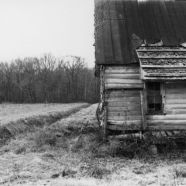





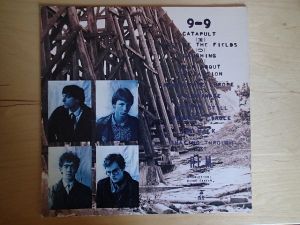
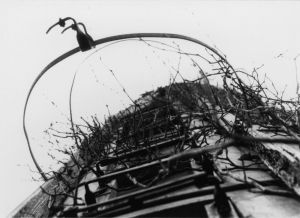
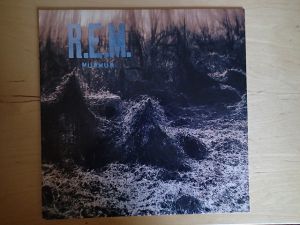
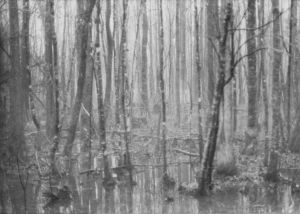
driver 8……. power lines are lowered so the airplanes wont get snagged……..
“have floaters” I think. The orange balls you sometimes see on power lines
Yes, and I think it is “snared” not “snagged”–but both Nigel’s and Bernie’s quotations illustrate the elusiveness of Stipe’s lyrical delivery!
A fine piece. Thank you for posting. Just one minor nitpick — “Murmur” and “Reckoning” were both recorded at Reflection Studios in Charlotte, not at Mitch Easter’s Drive-In Studios in Winston. Sadly, Reflection Studios closed its doors about two years ago.
Gene, thanks for the clarification regarding the respective studios of the various records. I indeed thought they were all done at Drive-In, but at least *Chronic Town*, *Murmur*, and *Reckoning* were all recorded in North Carolina!
Robert, I can not believe that you didn’t make the effort to see them live in your teens.
Van, I know, I know! I really regret never seeing them in concert ever, but especially from this period. I actually did have one chance to see them with a bunch of my high school friends, circa 1987 or ’88, I think somewhere in NC. Unfortunately, as I recall I had some big schedule conflict with the concert, I think it was something church-related that I was committed to attend and…well, I am now an Episcopal priest. So I guess you could say that I chose the Church over R.E.M., rightly or wrongly. But I did see U2 on The Joshua Tree tour in Hampton Roads, VA!
Thank you very much for your fine article. Your observations regarding the R.E.M. style, appeal, regionalism, and the way their early records triggered emotions and imagery are spot-on! What I consider astonishing about those five IRS Studio albums is that there is not a single bit of filler in any one of them. All the songs are excellent.
Thanks! And, yes, I certainly agree about the lack of “filler” on those albums. In the long lost days of AOR or “Album Oriented Rock” every song had to count like chapters in a book to create the total work.
This could have been written by me, clutching Fables in one hand and Boy in the other. It look me a bit longer to give up. I returned from a year overseas in 1988, walked to the local record store, purchased Green, played it, and realized a part of my life had drawn to an end.
Patrick, thanks for confirming my analysis!
brilliant piece Rob! also seeing your photographs here reminded me of a batch of pictures i have that you took during a visit with you in Edenton of derelict buildings on the water.
Chris, I just saw this comment! Thanks so much. I remember that visit fondly and certainly do recall your own photographic interest in the old buildings in Edenton and Chowan County, NC. And of course our shared love of U2 and R.E.M.
REM opened for U2 at Vanderbilt’s law school auditorium…….probably 1981. You should have been there. From very early they bands had a strong friendship and mutual admiration that is still there today!
Clay, thanks for this comment. I’m sure that was an amazing and historic combination, and in Nashville no less! Alas, I was only 11 in 1981 and don’t think I could have made it from north-eastern North Carolina for the event…